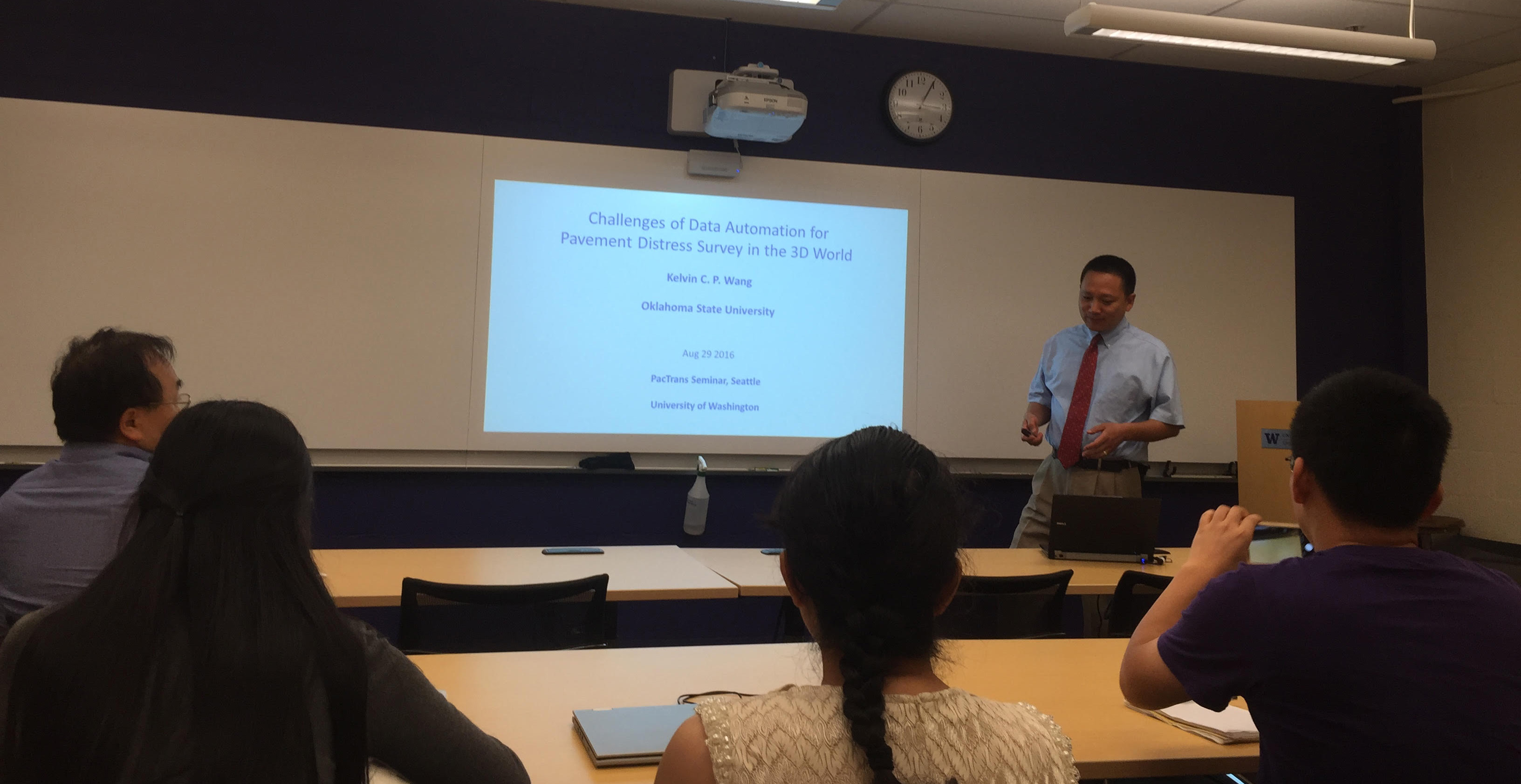-
September 01, 2016
Dr. Kelvin Wang Seminar on Innovations in Pavement Distress Surveying
This past Monday, August 29, 2016, Dr. Kelvin Wang, professor of civil engineering at Oklahoma State University (OSU) and Gilbert, Cooper, and W&W Steel chair, presented a PacTrans sponsored seminar on the University of Washington campus. His seminar was titled, Challenges of Data Automation for Pavement Distress Survey in the 3D World.
Dr. Wang began by giving an overview of the technology research that he has been conducting for the last two decades on pavement destress survey. Namely, he and his team have developed a series sensors that can be retrofitted to any number of vehicles for the purpose of gathering 3D data on pavement distress. Their technology allows them to gather data at the 1mm level while the vehicle is traveling at 60 mph. They have already provided this technology to several state DOTs, airports for runway survey, and others.
Dr. Wang went on to talk about the challenges with processing the collected imaging. Current technology requires that researchers manually inspect the imaging collected and physically hand highlight the cracks made visible by the data collection. This is necessary to distinguish between, for example, a crack and a groove that was intentionally included into the design of the roadway for noise mitigation and moisture safety mitigation.
Thus humans use significant amounts of time and man power to process the data that is now collected at an enormously efficient rate. Dr. Wang seeks to find a way to model human intelligence and cognition in an effort to automate or quasi automate the processing process. Here he spoke at length about the emergence of something called Deep-Learning which is a branch of machine learning based on a set of algorithms that attempt to model high-level abstractions in data by using a deep graph with multiple processing layers, composed of multiple linear and non-linear transformations. Basically this technology, with time and training, should be able to learn how to distinguish between a crack and a groove and eventually process all of the survey imaging at much, much faster rates that the human method.
PacTrans would like to sincerely thank Dr. Wang for visiting and spending his time presenting his fascinating and innovative research with us.



